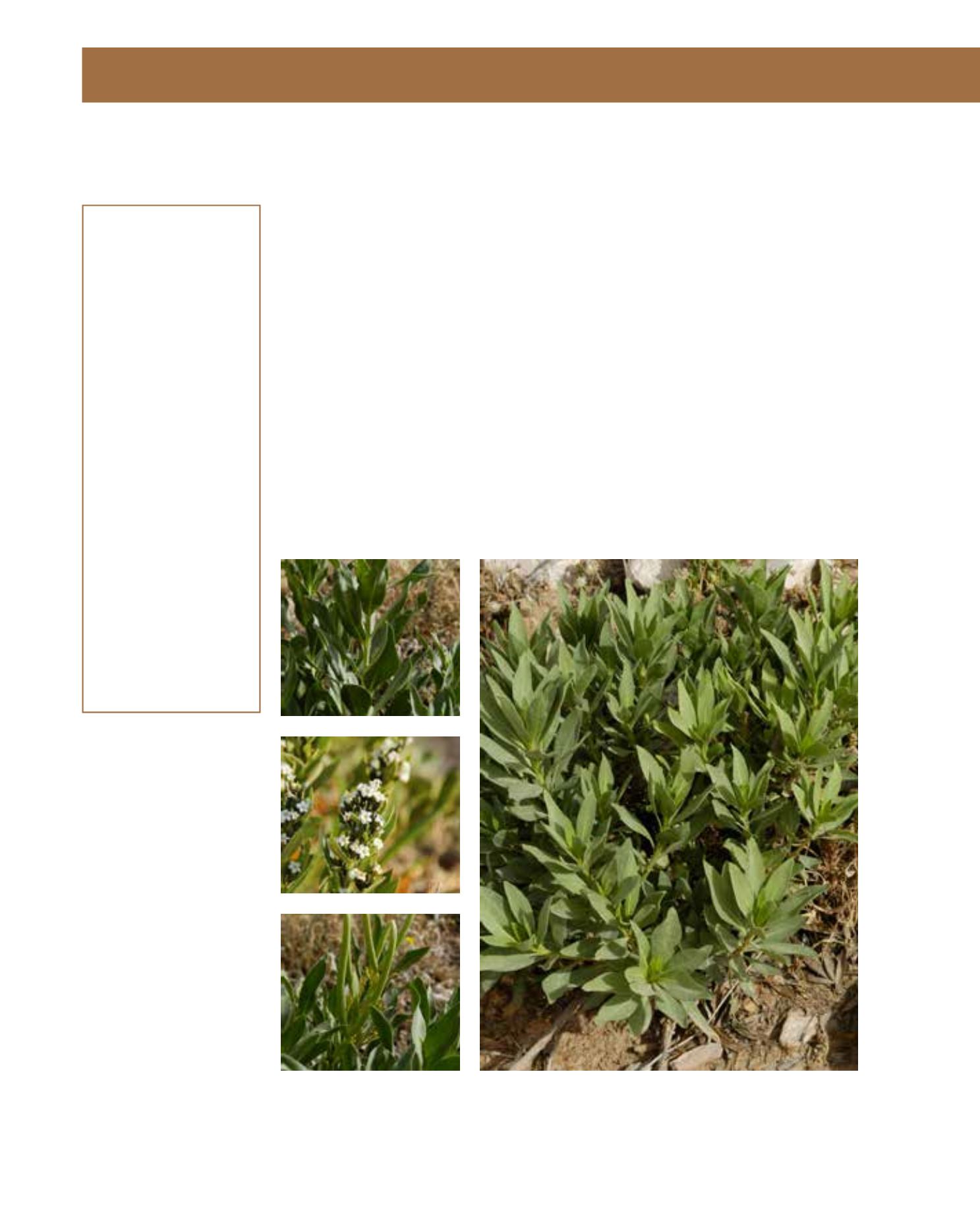

GENERAL
Origin
:
sub-tropical
Vigour
:
fast growing
Humidity
:
extremely arid,
very arid, semi-
arid
Propagation :
direct sowing
Maintenance :
low
CONDITIONS
Urban climate :
resistant
Dessication :
resistant
Stagnant water :
vulnerable
Irrigation
:
none
Salinity/ppm :
high (3500 ppm)
Hardiness
:
-9°C
SHAPE
Type
:
shrub
Height
:
1 m
Spread
:
2 m
Foliage
:
evergreen
FLOWER
Colour
:
white
Size
:
0.5 cm
Period
:
June - August
FRUIT
Type of fruit :
pod
Fruit size
:
5 cm
Toxicity
:
poisonous
Rhazya stricta has the common Arabic name of harmel. It is an evergreen shrub growing about 1
metre high. This native shrub is distributed over the Arabian Peninsula. The numerous branches
lie close to the ground. The leaves are alternately arranged, lanceolate and about 10 cm long. The
foliage is very dense and leathery. The plant is a member of the Apocynaceae, and is poisonous in
all parts. But, it was used as remedy for sore throat and fever. The small, white, star-like flowers
appear in summer. After flowering, the plant develops small pods with black seeds. Propagation
is by seed. The plant is very well adapted to harsh desert conditions with its strong foliage, tap
roots and high salt tolerance. It grows on sandy or silty soil. Rhazya stricta can frequently be
found in Arriyadh and its surroundings. With its dark-green foliage, it is eye-catching and a
welcome sight in the harsh sunlight of the desert landscape. After long droughts, it may look a
little straggly, because some evergreen leaves will dry out and become brown. Even so, however,
it can be recommended for use in landscape design in open situations as a coloniser, a bank and
slope stabiliser and for environmental consolidation. It is valuable to restore natural plant cover.
In inner-city locations with some irrigation, it will not dry out, and the foliage will remain green.
Some pruning will be necessary. It can be considered for natural themes or in situations where
other plants are struggling because of hard site conditions, e.g. roadside greening.
257
Rhazya stricta,
Apocynaceae
Rhazya,
harmel, hamad
















